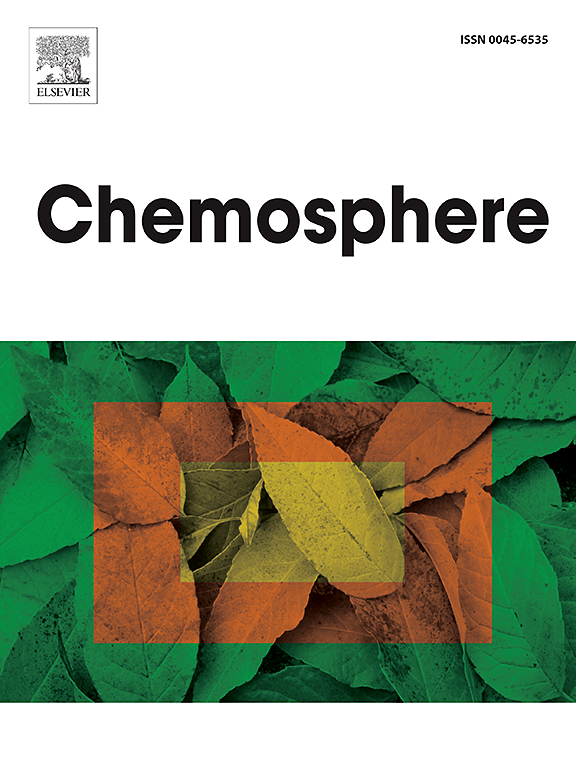n掺杂和Cu-Fe负载生物炭增强光类fenton AOP高效去除磺胺甲恶唑:经济合成、催化、性能和机理
IF 8.1
2区 环境科学与生态学
Q1 ENVIRONMENTAL SCIENCES
引用次数: 0
摘要
本研究以废弃核桃青皮为原料,采用浸渍热解法制备了含铜和铁的生物炭材料。表征结果表明,Cu和Fe浸渍不仅提高了生物炭比表面积,而且实现了高度的分散。在CuFe@BC-(1:1.5)中,N元素掺杂与Cu2O/Fe3O4的异质结表现出改进的光芬顿类高级氧化过程(AOP)。在光解条件下,在中性ph条件下,30 min对磺胺甲新唑(SMX)和总有机碳(TOC)的去除率分别达到92.25%和73.89%。羟基自由基(•OH)是SMX降解的主要活性物质,而x射线光电子能谱(XPS)揭示了Fe3+/Fe2+和Cu2+/Cu+的组合跃迁增强了催化剂的氧化还原循环。CuFe@BC-(1:1.5)在5次循环循环后仍保持较高的去除率,制备过程可重复5次以上。本研究经济地利用废弃核桃青皮作为元素碳(C)和氮(N)的来源,提出了一种同时实现废物再利用和污染物去除双重目标的新策略。本文章由计算机程序翻译,如有差异,请以英文原文为准。

Enhanced photo Fenton-like AOP by N-doped and Cu–Fe loaded biochar for efficient sulfamethoxazole removal: Economic synthesis, catalytic, performance and mechanism
In this study, copper and iron-loaded biochar materials were innovatively prepared from wasted walnut green peel using a pyrolysis method with impregnation. Characterization results indicated that Cu and Fe impregnation not only enhanced biochar-specific surface area but also achieved a high degree of dispersion. The heterojunction of N elemental doping and Cu2O/Fe3O4 in CuFe@BC-(1:1.5) demonstrated improved photo Fenton-like advanced oxidation processes (AOP). Under photolytic conditions, removal efficiencies for sulfamethoxazole (SMX) and total organic carbon (TOC) reached 92.25 % and 73.89 % at 30 min with neutral pH. The hydroxyl radicals (•OH) were the principal reactive species in the degradation of SMX, while x-ray photoelectron spectroscopy (XPS) disclosed that the combined transitions of Fe3+/Fe2+ and Cu2+/Cu+ enhanced redox cycling of the catalyst. CuFe@BC-(1:1.5) maintained a high removal rate after five recycling iterations, and the preparation process could be repeated more than five times. This work economically employed waste walnut green peel as a source of elemental carbon (C) and nitrogen (N), proposing a novel strategy to simultaneously achieve the dual objectives of waste reuse and pollutant removal.
求助全文
通过发布文献求助,成功后即可免费获取论文全文。
去求助
来源期刊

Chemosphere
环境科学-环境科学
CiteScore
15.80
自引率
8.00%
发文量
4975
审稿时长
3.4 months
期刊介绍:
Chemosphere, being an international multidisciplinary journal, is dedicated to publishing original communications and review articles on chemicals in the environment. The scope covers a wide range of topics, including the identification, quantification, behavior, fate, toxicology, treatment, and remediation of chemicals in the bio-, hydro-, litho-, and atmosphere, ensuring the broad dissemination of research in this field.
 求助内容:
求助内容: 应助结果提醒方式:
应助结果提醒方式:


